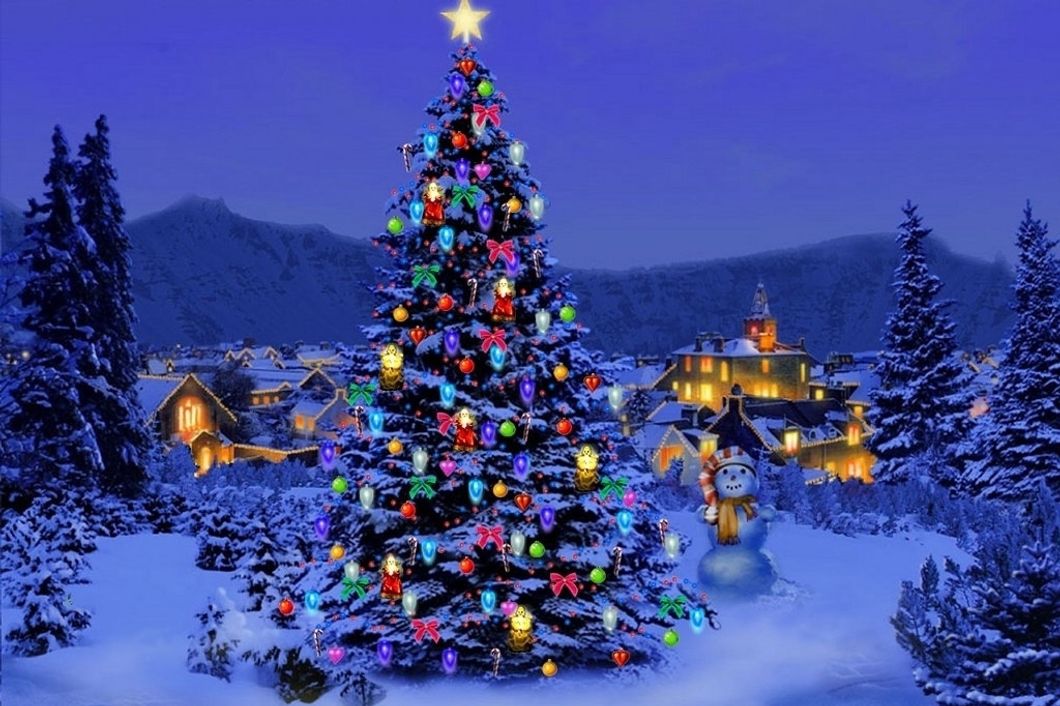As a small child, I used to dream of a white Christmas. Year after year, I firmly believed in the magic of Christmas snow, and that because Christmas was special, it could happen. Unfortunately, I lived in southern California at the time. As a result of my location, it would not be until I moved to northern Arizona and then well into my adulthood that I finally got my first ever white Christmas, and it stranded me on the side of the road. It was, needless to say, not very magical.
In the classic, stereotypical Christmas imagery, it is always snowing. Why? Every Christmas movie, many Christmas songs, and the commercial star of Christmas (Santa Claus) are all very snow themed. Why? Is this merely because Christmas takes place in the winter, or is the reason more sinister? What about everyone who doesn't live in a cold climate, or even if they do, it often doesn't snow until January or February? It does seem a little odd that a holiday that is supposed to be celebrating the birth of our Savior, Jesus Christ (who was not born in December, or in a cold climate) would be so snow crazy. As it turns out, Bethlehem does get snow occasionally, but it is a rare phenomenon that likely did not happen on the night of Jesus' birth. So, what gives?
As it turns out, the man we all need to thank is Charles Dickens. The famous author of the classic "A Christmas Carol" helped perpetuate and form the traditions we know and love today, including the ideal white Christmas. Christmas has been celebrated in some form or another for at least a thousand years, but Christmas as we know it today began to really take shape in the 19th century when Charles Dickens was a brand new writer and "A Christmas Carol" was first written.
We cannot fully blame Dickens for this, like the weather, he was accustomed to playing a role. From the mid 16th century to the late 19th Century, the world was colder than it is today. Places that normally never saw snow got snow, winters lasted longer, and lakes and ponds froze over in places it normally didn't. So, thanks to this "Little Ice Age", a white Christmas was far more common 150 years ago, which happens to be when many of our traditions were taking shape. The majority of Dickens' childhood Christmas' were snowy, and so his Christmas tale, of course, was as well.
In addition to Dickens' famous story, we have many snow-themed songs, the most guilty culprit being "White Christmas". This song was written by Irving Berlin in 1940 and sang by Bing Crosby in December of 1941. The origin of the song's popularity is really quite sad. It was originally intended to be a satire, sung by sophisticates with drinks in hand, standing around a pool in sunny southern California. It was intended to be in a movie called "Holiday Inn" with this satirical idea in mind. Berlin pushed for Crosby to sing it, and sing it he did, in December of 1941, just after Pearl Harbor. The song once intended for humor took on a whole new meaning for soldiers heading out to war and the family and friends left behind. For them, the song was longing for how things once were.
The song and whole idea of an ideal white Christmas are still that to this day. It is a longing for how things once were, or how we wish they could be. Everyone has a dream Christmas in mind, but as we grow older life gets in the way. Christmas can become dark and depressing, over commercialized and downright miserable. We all search for that "true Christmas Spirit", and some innocent souls dare to look to the sky for their hope. Perhaps if it snows, Christmas will go the way we want it to.
This year, the Farmer's Almanac has their own predictions of who will get a white Christmas, with Utah and the North East and Central parts of the country looking promising. For us in Arizona, it all depends on where you are. Maybe this year, we might get a little lucky.









































